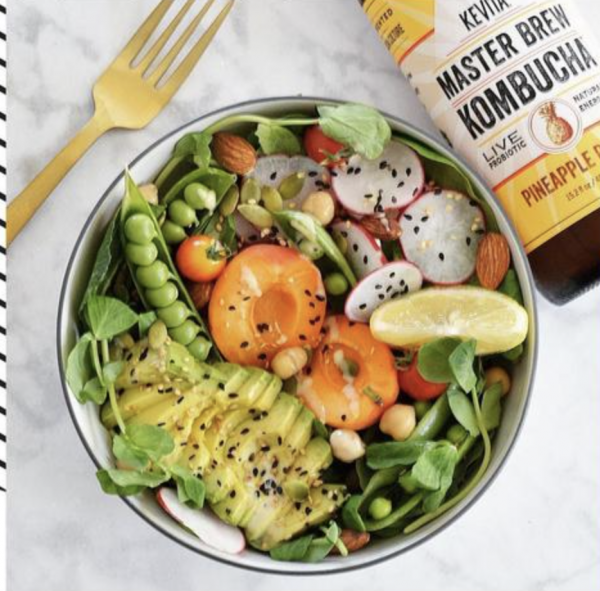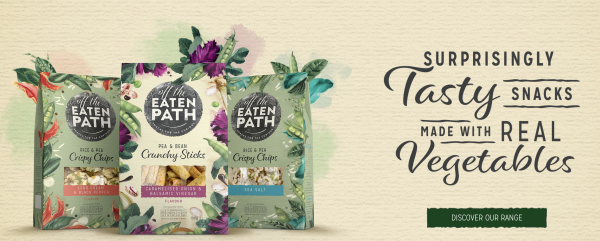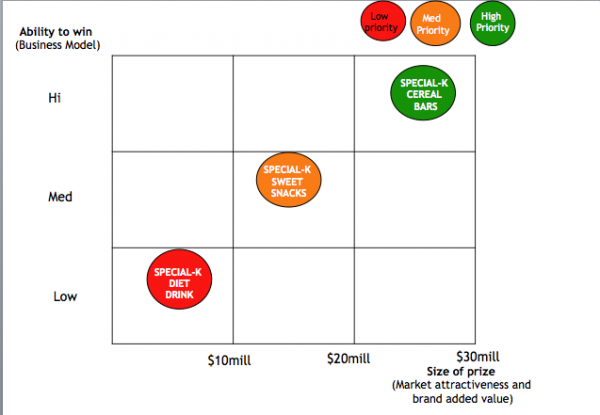There were some interesting inside tips on creating quality innovation@speed in a recent interview with Karen Scott, head of PepsiCo Europe’s Future Brands division (1). Speeding up innovation is a key challenge today, with over 1/3 of companies taking 1-2 years+ to get ideas from insight to approval, not even to market, according to brandgym research we recently posted on here. Karen reports that her team can “get to market in 50% less time than we have done on traditional innovation projects,” and below we explore some of the process changes that have made this possible.
1. Have an ‘always-on’ trend engine
This tool allows Pepsico to “monitor both traditional and social media, blogs, message boards, restaurant recipes, review sites” on an ongoing basis. Algorithms are used to identify trends and, importantly, highlight the ones with the potential to sustain over time. We posted recently on how this approach was used to create new flavours on Walker’s crisps.
Interestingly, the insight engine is based on seven human drivers that don’t change much over time. What changes is how these drivers play out, based on changing macroeconomic circumstances, political situations, wellness, technology. Diets is an example Karen quotes: “This year, the two most interesting diet spaces are keto and plant power.”
2. ‘Hot house’ idea creation & exploration
“We are experimenting with what I call ‘design sprints’,” Karen explains. “Traditionally in large companies, the whole innovation process has taken quite a long time. We’re trying to condense creation into a week-long sprint. (A cross-functional team) spend the week together creating prototypes and having had some feedback from consumers.”
We’ve had great results from this sort of process, that we call ‘Hothousing’, running our first week-long ‘sprint’ 10 years ago for a dairy brand in Malaysia. Some of our learning on how to make this sort of process effective includes:
- Team immersion: you need the commitment of the team to clear diaries and immerse themselves in the process
- Bring ideas to life: critical to our projects is a brilliant design team who, as if by magic, can visualise ideas overnight. I also like how Karen talks about having chefs on hand to literally cook up ideas
- Rapid consumer feedback: new techniques are needed to get rapid consumer input. One way is running what we call a ‘Consumer Kitchen’, where we have four moderators running four simultaneous consumer groups, with topline analysis overnight and a ‘hot debrief’ the morning after
3. Create ‘minimal viable propositions’
Our own research shows that one key change to speed up innovation is to get your product or service into the hands of consumers faster, so you measure buying behaviour, not buying intention. Its great to hear a big company like Pepsico experimenting in the same way that start-ups and smaller insurgent brands do.
One way Karen’s team is doing this is by using access to new brands from other parts of Pepsico. “We’ve recently been experimenting with kombucha through [KeVita], which was an acquisition over in the States three years ago,” she reports. “We’ve imported that brand over and we’re busy learning around kombucha.”

4. Co-create with customers
We’ve seen great results from recent clients projects where brand teams have co-created products with retail partners. A key advantage is that new products with initially low rotation get a bit more time on shelf to prove themselves, as the retailer has been involved in the project and has a shared interest in it.
The UK launch of the Off the Eaten Path brand was developed in this way, through working intensively with Sainsbury’s. “The Sainsbury’s experiment has gone brilliantly and we’ve had a lot of interest – and demand, frankly – from some of our other retail partners to go through that same process,” comments Karen.

5. Test, learn, kill or scale
‘Test ->Learn ->Scale or Kill’, was an approach I posted on here, based on learning from an interview with Laundrapp’s Founder and CEO, Edward Relf. The idea is to get low-risk learning before deciding whether to go big and scale-up, or kill an idea. Karen and her team are using some of Pepsico’s smaller, newer brands to do this. “We can experiment in a relatively low-key, low-risk way, away from the core brands,” she explains.
This learning can then be expanded to the wider portfolio, when the time is right. “Once we’ve learnt about something and it’s nearer ‘the tipping point’, we can potentially take some of those ideas and put those onto the core brands.” For example, having been successful with vegetables and pulses on the Off the Eaten Path brand, these ingredients have then been rolled out to Walker’s Oven Baked crisps.
6. Follow the money
We’ve written a lot in our books and blogs about the need for brand teams to spend more time looking at their ‘ability to win’ when creating new products and services (see Special K example below), not just the ‘size of prize’, including this post. And this is a view that Karen clearly shares too. “Not enough people pay attention to the economics and the supply model. Can we create the proposition that the consumer wants at a price they’re willing to pay, where we can still make money?” she rightly says in the interview.

In conclusion, Karen’s learning shows how big brands can speed up innovation, whilst maintaining quality, not by cutting corners but by being creative in the way you get insight, create & explore ideas and then get to market to generate real-life learning.
Sources:
